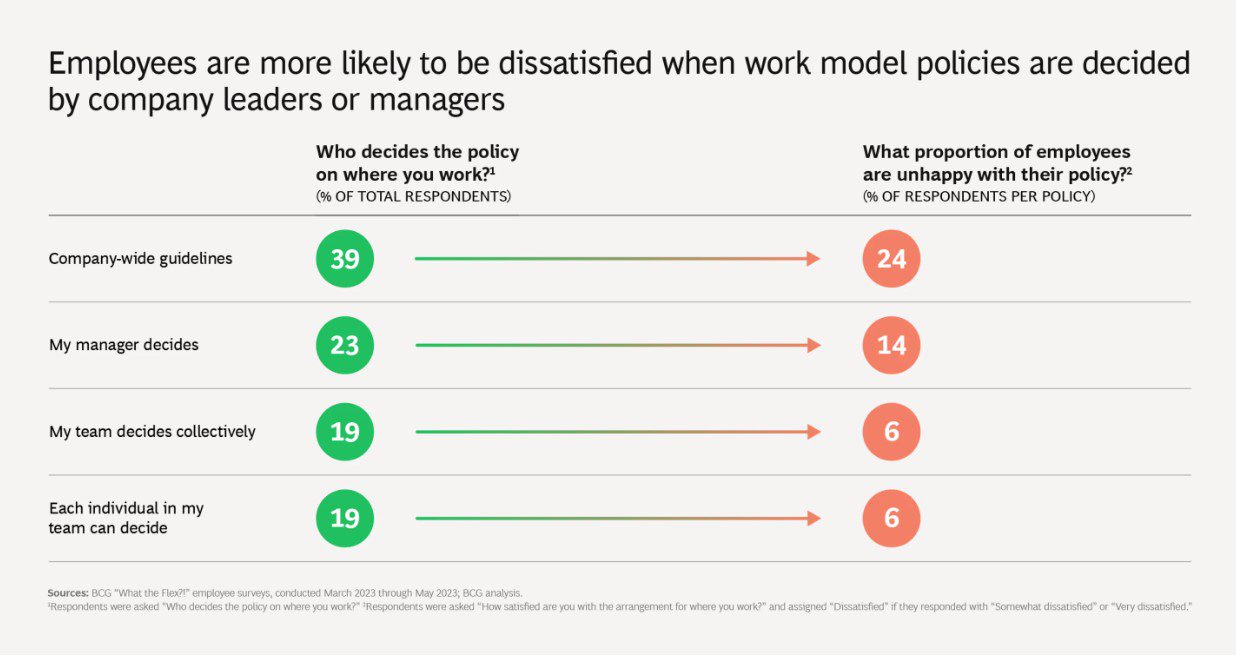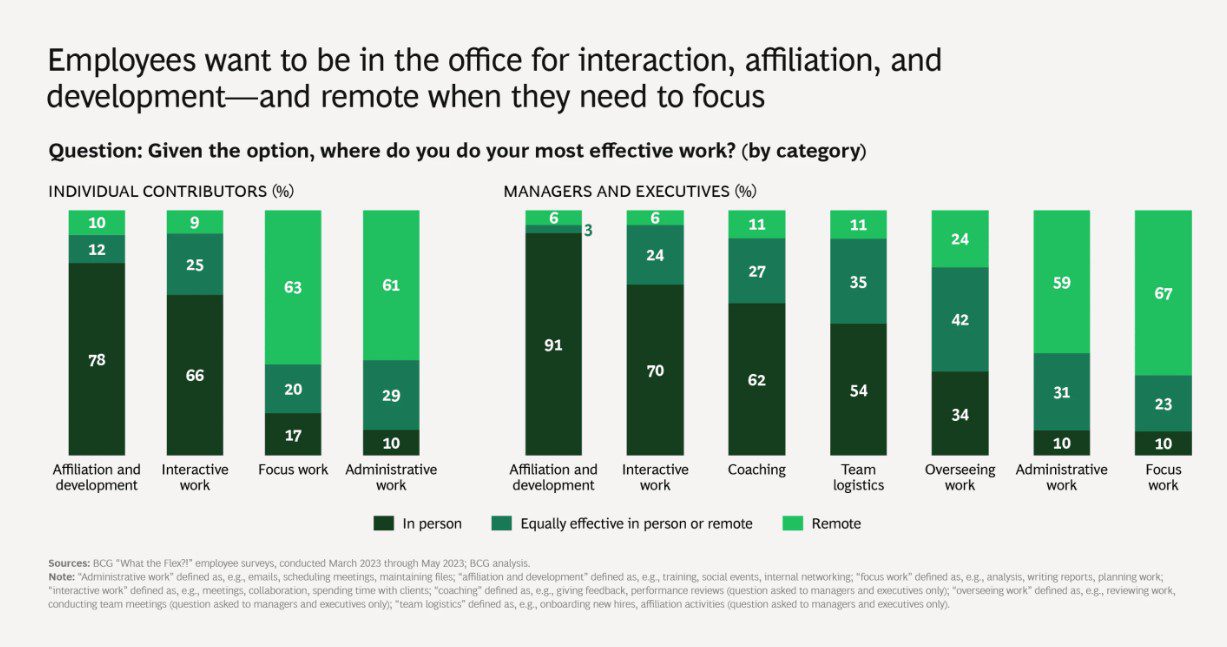BCG: Involve employees in design of hybrid policies
Or risk high attrition rates.
News In Brief
Organizations are struggling to get hybrid work right.
BCG's new survey of 1,500 global workers sheds some light on what success looks like.
The consultancy giant unpicks why organizations must listen to teams and their preferences.
Not all hybrid models are created equal.
According to new data from BCG, the more prescribed and restrictive the hybrid working model, the less compliance and satisfaction employers see from their workers.
While 85% of the 1,500 global workers studied by the management consultancy said their organization is hybrid, 21% only came into the office for key events, 39% could vary their days every week, and 25% had set days.
While there is 99% satisfaction for coming in only for key events, this drops to 70% for set days in the office.
Only 28% of those with a set day model were happy with their flexibility – this rises to 100% for the other two models: only key events and varying their days every week.
Central to this frustration is that 62% of employees feel like they have no say in where they work.
39% said their company decided, and 24% were unhappy with this. The dissatisfaction drops to 16% when managers decide and 6% if the team gets to decide.

Credit: BCG.
Listen to how people want to work
Like a recent Microsoft report, BCG calls on employers to not focus and agonize too much on the number of days that employees come in.
Instead, companies should design their working model based listening to employees needs and preferences. To do this, organizations need to have a real understanding of how their people do their best work.
BCG’s data shows that although employees want to be in the office for interaction and development, they want to work remotely to do focus and admin work.

Credit: BCG.
So, employers who want to get the most out of their workers must empower managers to customize work models based on their team’s tasks, preferences and requirements. The focus must be on impact, not on input.
If they fail to do this, they will not only have dissatisfied workers, but they may face an attrition crisis.
Nine in ten see flexible working patterns as top of mind when looking for a new job, and those dissatisfied with their flexible model were 2.5 times more likely to leave their organization within the next year.
“Leaders in the future of work need to take the time to understand how to enable employees to do their best work—so that they can create value and thrive,” concluded BCG.
Sign up to the UNLEASH Newsletter
Get the Editor’s picks of the week delivered straight to your inbox!

Chief Reporter
Allie is an award-winning business journalist and can be reached at alexandra@unleash.ai.
